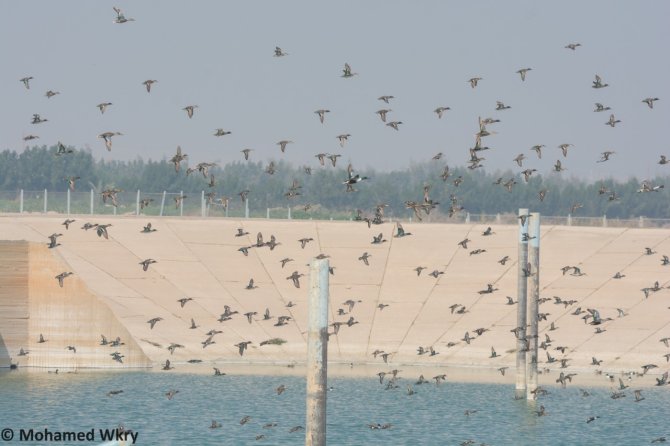
News
Saving Water or Saving Birds? The Unexpected Role of Wastewater Treatment Plants
Climate change and human activities are causing wetlands to disappear at an alarming rate. But could wastewater treatment plants be the answer for birds that rely on these shrinking habitats? New research in Egypt by Wageningen University & Research sheds surprising light on the role these facilities play in nature.
Every autumn and spring, millions of birds travel thousands of kilometers between their breeding grounds in Europe and their wintering sites in Africa. Along the way, wetlands—swamps, ponds, and lakes—serve as crucial resting and feeding stops. But there’s a problem: worldwide, these wetlands are vanishing rapidly. In the past century alone, more than half of them have disappeared.
In Egypt, where the dry landscape and high population density offer few natural water sources, the situation is even more critical. This led scientists Khaled Noby and Marc Naguib to ask: could wastewater treatment plants (WTPs) serve as alternative wetlands?
Noby, Naguib and colleagues studied 25 wastewater treatment plants along the Nile—a key migration corridor for birds. They compared four different types of WTPs, ranging from basic systems with open water basins to high-tech facilities where every drop of water is reused.
More Technology, Fewer Birds
The results were striking. Older, less advanced treatment plants—especially those with open water and uncontrolled overflow basins—attracted significantly more bird species than the most efficient systems, where water is fully recycled and no ponds remain.

The reason? Naguib explains: “Open water attracts birds. In simpler treatment plants, excess water often forms small ponds where algae and tiny creatures like plankton thrive, providing an essential food source for many bird species. These areas also offer crucial resting spots for migrating birds.”
In contrast, the most advanced WTPs—where all water is reused and no surface water remains—saw far fewer birds. The only species present were those typically found in urban environments, like house sparrows and wagtails.
A Tough Choice: Clean Water or Biodiversity?
“This research highlights a major dilemma.” Noby, executive director of Nature Conservation Egypt and PhD-candidate at WUR says. “Water is scarce in Egypt, and modern purification technologies help recycle as much water as possible for agriculture and drinking supply. But this comes at the cost of vital bird habitats.”
The scientists point out a conflict between two key Sustainable Development Goals (SDGs):
- SDG 6: Clean Water and Sanitation – The goal of using water as efficiently as possible.
- SDG 15: Life on Land – The protection of ecosystems and biodiversity.
How can we save water without harming biodiversity?
Finding a Smart Middle Ground
Fortunately, this doesn’t have to be an either-or decision. The researchers suggest that policymakers consider nature when designing new WTPs. Possible solutions include:
- Keeping some open water basins in sensitive areas so birds have places to rest and feed.
- Allowing natural vegetation to grow around the treatment facilities, creating shelter for different bird species.
- Regularly monitoring water quality to prevent basins from becoming dangerous ‘ecological traps’ filled with polluted water.
In a world where human needs and nature often clash, this study shows that smart solutions are possible. Wastewater treatment and conservation don’t have to be opposites — if we design systems with both in mind.